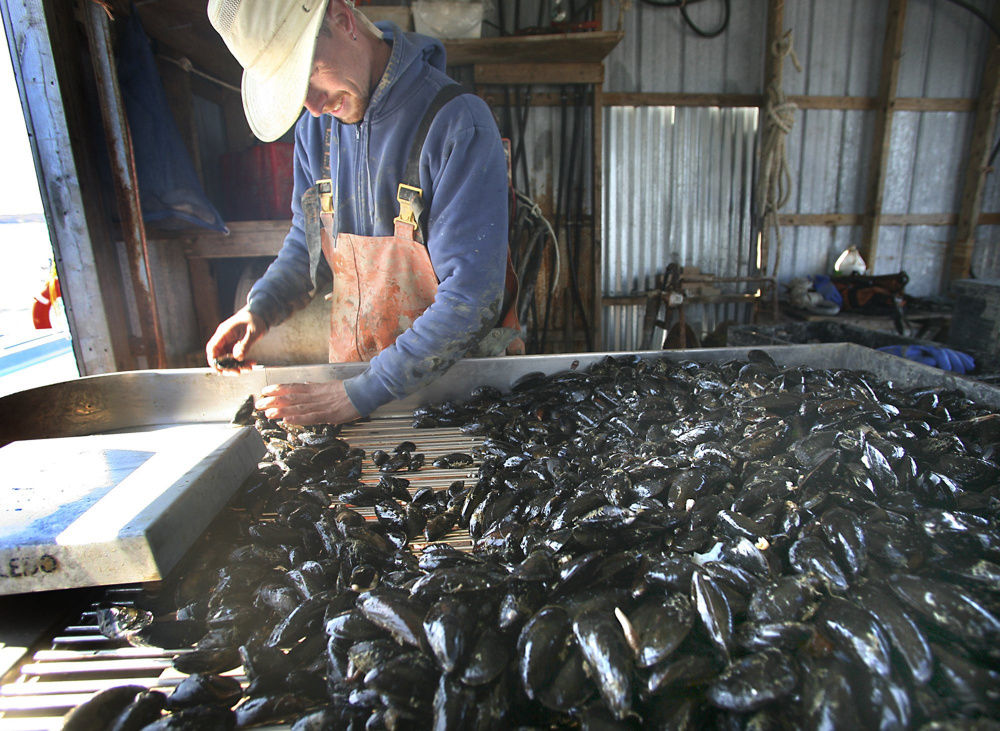With its clean, cold waters, its proximity to large markets and its wide open coastline, Maine’s farmed oyster, mussel and scallop industries are poised to more than quadruple in value over 15 years, according to a new report from the Gulf of Maine Research Institute.
Right now, Maine produces $24 million worth of oysters, mussels and scallops a year, 4 percent of the $700 million national market. Aquaculture accounts for about a quarter of Maine’s shellfish, worth about $6.5 million a year, according to state data.
But a market analysis prepared for GMRI by The Hale Group, the Massachusetts-based food and agribusiness consultancy, predicts that Maine’s shellfish aquaculture industry will grow to $30 million by 2030, which gave Maine ocean farmers and groups that work with them, like GMRI, reason to cheer.
“The major finding is the significant room for growth in farmed oyster, mussel, and scallop sectors at a scope and scale that fits with Maine’s working waterfront culture,” concluded GMRI in the report that it unveiled Wednesday.
Mussels and scallops show the most promise, according to the market analysis. Demand for Maine’s mussels is expected to grow faster than the industry average, given their market reputation. The domestic supply of scallops, meanwhile, meets just half the nation’s demand, giving Maine scallops a big opening.
According to the analysis, the markets could experience the following growth in volume and value from 2015 to 2030:
• Mussels: 1.35 million to 10.5 million pounds, $2.4 million to $18.6 million value
• Oysters: 7.1 million to 18.6 million pieces, $4.1 million to $9.05 million value
• Scallops: The 2015 value and volume of the catch is confidential because of its small size, $5 million 2030 value
To hit triple-digit growth, however, farmers and trade groups have to work together to expand geographic coverage, grow the brand equity to support Maine’s market position and premium price, pursue operational efficiencies and invest in winter harvesting capability, the report concludes.
For example, Maine shellfish farmers now work about 600 leased acres, with another 75 acres in the leasing pipeline. But that is not enough acreage to meet the projected demand, according to the analysis. Based on current yields, the industry would need another 550 to 600 acres by 2030.
Doubling the amount of coastline under aquaculture lease would account for just a fraction – less than 1 percent – of the state’s 3,500-mile coastline, the report found, and should ease the fears of other fisheries that might see an expansion as a threat to their territory.
Members of the state’s aquaculture industry say they will look to the report to help market their crops and decide how they might want to expand their operations.
“Ocean-farmed shellfish from Maine is one of the world’s perfect foods,” said Gary Moretti, the owner of Bangs Island Mussels that operates out of Casco Bay. “Understanding future market potentials guide us in developing this emerging industry.”
Send questions/comments to the editors.




Comments are no longer available on this story